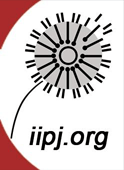Article Title
Inequities in Diabetes Outcomes among Urban First Nation and Métis Communities: Can Addressing Diversities in Preventive Services Make a Difference?
Abstract
This article primarily aims to demonstrate how diversity is reflected among urban Aboriginal peoples in Canada. Secondly, it uncovers if and how preventive health services in the province of Ontario, Canada are responsive to this diversity. Data for this study were gathered from a review of literature on culturally appropriate health service delivery to Aboriginal peoples in Canada and a qualitative exploratory study conducted with urban First Nation and Métis people, and health service providers and policy makers. The findings from review of literature and the exploratory study indicated that the nature of Aboriginal diversity and its trends are complex. From the document review, we can comprehend that socio-economic disparities among First Nations and Métis, compared to non-Aboriginal people, are reducing slowly; however, evidence from the exploratory study suggested otherwise and indicated that there is also a strong need for First Nation and Métis families to overcome barriers in order to improve their quality of live in urban Ontario, Canada. It is evident that health services for urban First Nation and Métis people cannot address existing health inequities by simplistic application of pan-Aboriginal strategies in preventive services. Initiatives for urban First Nation and Métis people require strategies that are targeted at the unique and distinct needs of First Nation and Métis residents regardless of their legal status, cultural pluralities, socio-economic backgrounds, and place of residence in cities.
Acknowledgments
The authors are immensely indebted to the Métis and First Nations, and health service providers and decision maker participants of this research for sharing their stories. The authors gratefully acknowledge the members of Aboriginal Community Advisory Circle (ACAC) for providing their guidance and mentorship throughout the tenure of this research project. First author’s doctoral research was funded by CIHR-IAPH funded AK-NEAHR (Network Environment in Aboriginal Health Research) (former Ottawa ACADRE) and IHRDP (Indigenous Health Research Development Program) programs, PHIRN (Population Health Improvement Research Network) doctoral award and University of Ottawa Admission and Excellence scholarships.
Creative Commons License

This work is licensed under a Creative Commons Attribution-Noncommercial-No Derivative Works 4.0 License.
Recommended Citation
Ghosh, H.
,
Spitzer, D.
(2014).
Inequities in Diabetes Outcomes among Urban First Nation and Métis Communities: Can Addressing Diversities in Preventive Services Make a Difference?. The International Indigenous Policy Journal, 5(1)
. Retrieved from: https://ir.lib.uwo.ca/iipj/vol5/iss1/2
DOI: 10.18584/iipj.2014.5.1.2
COinS
